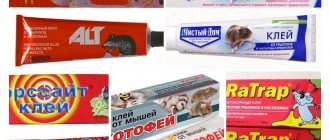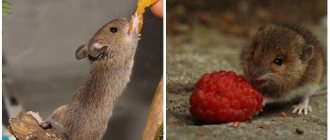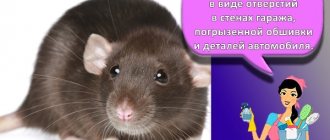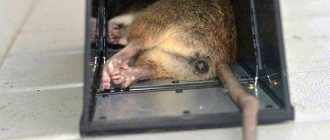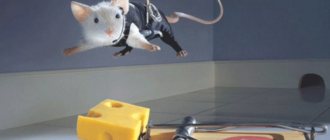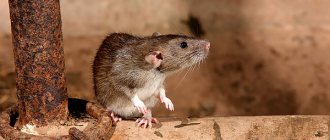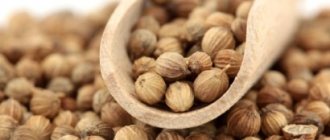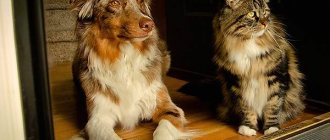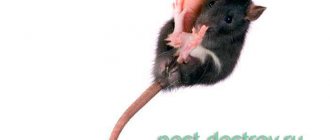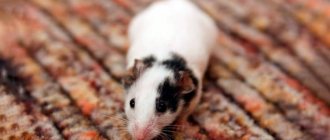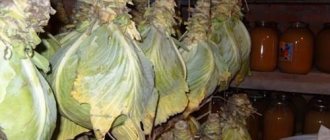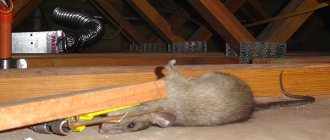Blood anticoagulants
Effective poison against mice and rats. It affects the composition of the rodent's blood and causes hemorrhage. It does not act immediately, but the pest crawls out into the open air to die. There will be no need to look for the corpse in the walls or under the floor.
On a note!
Wild rats are wary of unfamiliar treats. If they notice that a relative has died from the product, then no one else in the population will eat the poison. Substances with a long-term effect do not cause suspicion in them, so such drugs make it possible to better get rid of pests.
Active ingredients of anticoagulants:
- coumarin;
- warfarin;
- brodifacoum;
- Bromodiolone.
There are poisons for mice of the first and second generation. They are all equally effective. The second generation drug acts a little faster: 3-5 days.
Mice poison
Rat death
Convenient to use. It is made in the form of dough, each piece of which is packed in filter paper. Contains natural ingredients:
- oil;
- flour;
- flavorings;
- sugar.
The poison also includes an antimicrobial component, which keeps the bait fresh for a long time. A person does not have to come into contact with the bait, which makes it as safe as possible.
Interesting!
Reviews say that this is the most powerful poison. But when buying a drug, you need to be careful not to run into a fake. It may not cause poisoning in mice.
Goliath
Mouse poison used by rat and mouse exterminators. The drug causes blood clotting, the rat loses its mind and becomes safe for humans. She goes out into the fresh air to die.
If the animal dies in a hard-to-reach place, then its corpse will not cause concern to the owners of the premises and will not have to get rid of the smell of the mouse. Mummification occurs, due to which the stench does not spread around.
Storm
Poison in briquettes that kills rats and mice that are immune to other poisons. Causes death from bleeding 3-10 days after consumption.
On a note!
It is advisable to replace bait every 7-10 days. They should be placed under shelters, near holes and on mouse paths so that the substance is not eaten by pets or birds.
Poison for mice Storm is considered a fairly effective drug that causes the death of absolutely all rodents.
Classification of poisonous agents
Poisonous agents can be divided into the following groups:
- Sprays are contact preparations applied to areas where rodents move.
- Creams. These products have a much higher concentration of toxic substances, which is why they can be considered more effective than sprays.
- Powdered preparations act together with a taste bait. The powder is added to food and thus enters the intestines of rodents, causing irreversible effects in their bodies.
- Pills. These products are designed to be consumed without a dietary supplement because they contain flavoring agents to attract rats and mice.
Poisonous agents can also be divided according to the principle of their effect on animals:
- Some poisons affect the digestive system of rodents, entering their bodies along with food. Animals are not able to empty their stomachs, since the drug suppresses their emetic effect. The need for food in rodents disappears, and they die from exhaustion.
- Other poisons negatively affect the blood supply system, thinning the blood of rodents, which leads to internal bleeding.
- Other types of poisons negatively affect the skeletal system. First, the poison destroys bone tissue, and then the entire body.
- Some poisonous drugs affect the nervous system of parasites. The main active components here are arsenic and zinc. These elements can cause oxygen starvation and exhaustion of the nervous system. When a rodent tastes such a treat, it will become disorientated and ultimately die.
You should know that rodents are able to adapt to a certain toxic substance, which is why it is better to use poisons in combination, this will definitely give a positive result.
It is impossible to give precise recommendations regarding the quality of poisonous drugs; they affect animals differently, and this depends on several factors. It should be remembered that if you decide to use tablets to bait rodents, do so immediately after purchasing them, since their shelf life is very limited.
When baiting rodents, try to limit their access to water. When the drugs begin to take effect, rodents become very thirsty, but they should not be given this opportunity. Powdered poisons are mixed with grain and sunflower oil is added.
Remember that poisonous drugs are toxic and can be dangerous to people and their pets. When laying out the poison, make sure that your children will not be able to get to it. Be sure to find and destroy the corpses of dead rodents, they may well cause poisoning of domestic animals, and besides, uncleaned corpses are clearly unsanitary.
Here mummifying drugs can come to our aid, reviews of which, however, are quite contradictory. The release form of such poisons is a tablet. Their price is significantly higher than the price of conventional drugs. The principle of these drugs is that they suppress the proliferation of bacteria, which has a preservative effect on tissues.
It is known that the smell from dead animals lasts up to several weeks, and manufacturers of mummifying drugs claim that after using their drugs the smell will not bother you. But the composition of these products excludes preservatives, so how the preservation process will take place is completely unclear.
In addition, the mummification process takes time, and it must take place under certain conditions. These conditions, of course, cannot be met in the basements of houses.
Other organic poisons
Mouse poison
The most famous poison from this group is Rat poison. It causes breathing to stop and forces the rodent to crawl out into the fresh air. It is used primarily to kill rats. It doesn't have as much effect on mice.
On a note!
Subsequent generations of animals can develop immunity to the active substance. Therefore, it is not recommended to use poison more than once every two months.
Available in the form of ready-made grain bait, powder and gel. Can be used to prepare liquid baits.
Gardeners also recommend Ratibor. It is used to treat fruit trees, the bark of which mice like to gnaw on. Ratibor helps save apple trees from mice, insects and other rodents.
Effect of the drug
Rat Death poison is available in two forms - Rat Death 1, Rat Death 2. The main difference is in the active ingredient.
The first drug uses brodifacoum, the second - bromadiolone. Brodifacoum is more toxic; a small dose is enough to poison an animal. Bromadiolone acts more slowly, but the results are impressive.
The first drug is released in blue-green tones, the second one resembles pieces of meat. The following are used as auxiliary components:
- flour;
- vegetable oil;
- nutritional supplements;
- flavorings.
The toxic substance does not reveal itself in any way. Rats eat the bait with great eagerness and a huge appetite. Since the product does not begin to act immediately, pests do not see anything suspicious in the treat. All that remains is to add more poison to the rats and wait for the result.
Rat death, according to customer reviews, is one of the best rodent repellents on the market today. The secret of a positive result lies in the active ingredients.
Effect of the drug
How the poison works: brodifacoum, bromadiolone are anticoagulant rodenticides. Once in the animal’s liver, the substances interfere with the production of vitamin K, which is necessary to ensure normal blood clotting. A large dose of anticoagulants causes internal bleeding.
Death occurs within 3 days from the moment of eating a large dose of the drug or within a week if the drug is taken in small doses. The active components are not excreted in urine and accumulate in the animal’s body. Having reached a lethal dose, bleeding begins.
During the course of a day, an adult rat eats 50 g of food, a mouse – 5 g. With a high probability, a hungry animal will eat a lethal dose of rat poison in 1 day.
Inorganic poison
These drugs are harsh and harmful to the environment. They are quite effective in fighting rats because they kill the rodent quickly.
Mouse poison contains the following substances:
- phosphide;
- arsenide;
- compounds of zinc, aluminum and other metals;
- thallium and lead salts.
A large dosage is required to kill a rodent.
On a note!
In Moscow or another big city you can find inorganic poison. But it should be used carefully. It is extremely poisonous to animals and people.
These drugs are used less and less. They are usually used to control large numbers of mice or when pests have developed immunity to other poisons.
Everything you need to know about mummifying poisons
In fact, rat poisons with a mummifying effect, in the true sense of the phrase, do not exist on the market. The effect attributed to rodent poisons is simply an advertising ploy, a way to increase the attractiveness of the product, an empty promise and a feature made up by the seller.
The fact is that an inexpensive and competitive poison for rats, in principle, cannot be mummifying. To mummify the body of any animal, at least one of the following conditions must be met:
- Saturation of all animal tissues with substances that destroy decomposer bacteria;
- Or the corpse gets into conditions in which bacteria decomposing organic matter cannot exist.
An example of the first option is embalming the body, the results of which can be seen in the sarcophagi of the Egyptian pyramids or in the Mausoleum on Red Square in Moscow. An example of the second option is mummies of wild animals trapped in ice (it’s too cold for bacteria here), in the mud of swamps where there is no oxygen, or in very dry desert conditions where there is not enough moisture for the activity of decomposing microorganisms.
The second condition is unattainable in an apartment or office - microclimate parameters are always maintained here, quite normal for the decomposition of a rat corpse.
It is almost impossible to embalm a rat's body using poisoned bait, since such a procedure involves abundant saturation of the tissues with antibacterial agents. That is, you literally need to take a rat and soak it in a preservative.
Theoretically, mummification of a corpse can be achieved by adding special persistent broad-spectrum antibiotics to the poison, which do not decompose in the body for a long time. In this case, the rat will be killed by the poison, and the decomposer bacteria will be killed by the antibiotic. As a result, the corpse will not decompose (or the rate of decomposition will be very low) and will dry out faster than it stinks.
However, today there is no known poison for rats that contains such antibiotics. At a minimum, because such antibiotics are quite expensive - as a result, the poison would be very expensive and would not withstand competition in the market.
And now, perhaps, the most important thing: not a single official description and not a single instruction for rat repellents indicates their mummifying effect. This fact can be explained simply: drug manufacturers know very well that their products do not contain mummifying components and do not have the corresponding properties. They don't make anything up and are absolutely honest with customers. And non-existent properties are attributed to drugs by sellers who have little understanding of the theory, but skillfully use not entirely honest methods of increasing sales.
“I’m interested in this question: I look at the packaging of Storm, and there’s not a single word about mummification on it. And in the store the seller was straight up praising how good this mummified product was. I went to read on the Internet, half of the stores write that the product is mummified, half do not write this. There is a feeling that someone is coming up with something here..."
We conclude: no rat poison provides mummification of the corpses of dead rodents. However, there are quite a lot of products on sale that are positioned as mummifying. What effect then can be obtained from their use?
Release form
The most popular pestilence for mice is that it has an attractive smell. A person does not have to look for ways to prepare bait. The drug can be used immediately.
Manufacturers produce:
- Tablets against mice Storm, Tsunami.
- Grain Ratside, Viola, Bactorodencid.
- Poison in bags, with which you do not need to interact additionally, Rat Death, Nutcracker.
Poison is also available in the form of powders, gels and liquid solutions. Usually sold in bags. There are also aerosols. The active substance gets onto the mouse skin. The animal eats the poison while washing.
Home poison
Homemade poison
If it is not possible to use store-bought chemicals, then you can poison mice with a product prepared at home.
On a note!
Those who have encountered rodents are concerned with the question of how to make the poison themselves and whether it will be effective. The product may not be able to cope with a large population, but it is successfully used in apartments and private houses.
There are several homemade poison recipes:
- Mix equal amounts of lime and sugar. The lime will burn through the animal's esophagus and cause its death.
- Flour and gypsum are mixed 1:1. Milk is added to the mixture. The poison should look like dough. The substance will harden in the stomach and cause the death of the mouse.
- Mix crushed grain or flour with alabaster and place a container of water next to it. After eating, the rodent will drink water. The alabaster will mix with the liquid and harden.
- Cork powder is mixed with flour. Place the composition next to the water. The cork swells from moisture and causes the death of the pest. This method is quite effective.
Do-it-yourself poison is less powerful than store-bought chemicals. But its use is safer for humans and pets. And it will cost much less than a store-bought product.
Why do they say that mummifying poisons actually “mummify”?
In reality, the likelihood that a rat will die in an apartment or inside a private home is low. As a rule, animals make their nests outside residential premises: in basements or attics, in areas near houses, on dryers in apartment buildings, in hallways and garbage bins. Even from a powerful poison, they do not die immediately, but only after a few hours or even days, but when their condition worsens, they hide in their shelters. Here, near the nest, the cadaverous smell from the dead animal spreads.
Consequently, if a rat dies from poison not in the house, where it runs only in search of food, but outside it, then its corpse will not stink in the room itself. But a person who bought bait with a supposed “mummifying” effect will be sure that there is no smell precisely because the rats somewhere under the floor or behind the wall have turned into mummies. Although in fact they had already safely decomposed somewhere outside the apartment, they “stank” and all that was left of them were bones and wool.
Terms of use
You need to know not only how to poison mice, but also how to do it correctly. Only in this case will it be possible to kill all the rodents in the house.
Here are some simple rules for using chemicals:
- In enclosed spaces, poisons that mummify the animal should be used.
- All mouse passages and cracks in the walls, floor, and ceiling are carefully sealed.
- If the anti-rodent drug fails to poison the rodents, then they try another drug.
- Before using poison, you should consult an exterminator.
- The location of poisonous baits is constantly changing.
- If rodents do not touch the chemical, it is mixed with sugar or crushed grain.
Gloves and a hat should be worn when working with rodenticides. The poisonous medicine is placed out of the reach of children and animals. The room is checked for the presence of corpses. Dead animals are buried in a vacant lot or burned.
To avoid having to use toxic substances, prevention should be carried out. You need to do the cleaning, seal the cracks, not allow rodents access to water, and set up mousetraps.
General characteristics of rat poisons
Rat poison used to include substances such as arsenic, lead, and strychnine. Then its production was closed, explaining this as a particular danger to the human body. The next variety was Warfarin, but it was not used for long. The fact is that the rats were able to develop resistance to it, so they had to create a new poison. This is how “Kumatetralil” and “Brodifacum” appeared. Today there are quite a few types of poisonous substances for rats. Conventionally, they can be divided into three groups.
The first group includes “Rat” and zinc phosphide. However, their use is quite limited. This is due to the high toxicity of the active substance. Their advantage is that all rats that try the poison die. Moreover, the time required to destroy them is only a few hours. Despite their high toxicity, “Ratsid” and zinc phosphide are still used in cases where other poisons are absolutely powerless. The procedure requires close attention and control.
Strychnine
Another group includes rat poisons of the old generation, the use of which is strictly prohibited. These are strychnine, yellow and white phosphorus, arsenic, lead, thallium sulfate. Even knowing about their increased toxicity, people still occasionally resort to such means. You need to know that the consequences of their exposure can be irreversible, even fatal.
The third group is a new generation of substances that can be bought on the market or in special stores. The main component most often in them are zoocoumarins, which promote poor blood clotting. The effect of such poisons is that a rat or mouse, having tasted the poisonous agent, dies as a result of internal bleeding. Among the poisons of this group, anticoagulants of the first and second generations are distinguished.
First generation anticoagulants include Warfarin, Ratindan, Ethylphenacin, Izoindan, and others. Their peculiarity is that toxic compounds do not accumulate in the body, and after 3-4 days they are almost completely eliminated through the kidneys. The downside of these drugs is that rodents become addicted to them. That is why in some cases they resort to stronger drugs: Brodifacoum, Bromadiolone, Flocumafen, Difenacoum and the like. Their toxicity is significantly higher than that of first-generation anticoagulants, and the exposure time is shorter. At the same time, they are able to accumulate in the body.
Features of the composition
Poison for rats
There are several groups of toxic drugs. The composition of rat poison determines the effect of the drug.
- The first drugs for killing rats were produced based on arsenic, strychnine, lead, yellow or white phosphorus, and thallium sulfate. The active components have a rapid effect, causing terrible food poisoning and severe intoxication. It is enough for an animal to taste the bait to receive a lethal dose. After some time, the production of these types of rat poisons was stopped, citing a serious danger to human health and other animals.
- The next generation of drugs for killing rats were Brodifacoum, Difenacoum, Flocusafen, Bromadiolone with active ingredients of the same name. Such poisonous drugs include the poison Rat Death. A special place is occupied by the drug Krysid based on zinc phosphide. As well as poisons containing sodium silicofluoride, glyfluoride, and glomurite. The drugs quickly destroy rodents and are not dangerous to humans if the instructions and safety rules are followed.
- Drugs with a cumulative prolonged action are called a new generation of rodent repellents. Rat poison disrupts the functioning of the circulatory system, promotes clotting, and causes internal hemorrhage. Symptoms of intoxication are present, but to a small extent. The active ingredients are zoocoumarins. The most well-known drugs are Ratindal, Warfarin, Izoindan, Ethylphenacin.
